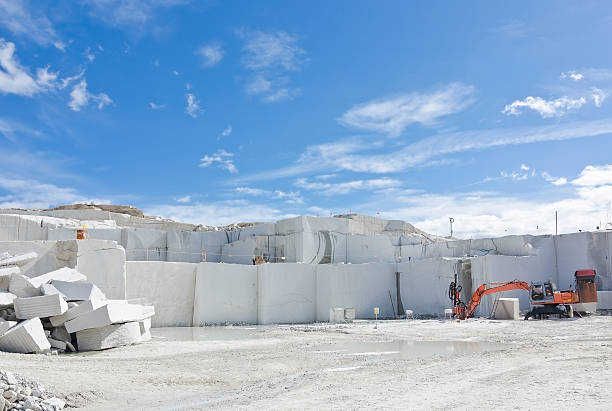Journeying With Granite Quarries in South Africa: A Visual Odyssey
Wiki Article
Discovering the Rich Background and Sustainable Practices of Granite Quarrying
As we depend on the precipice of discovering the detailed tapestry of granite quarrying, a journey via time reveals not simply the physical act of extracting rock yet also the social and historic relevance woven right into the very material of this technique. From the ancient beginnings that laid the structure for modern quarrying methods to the lasting methods that are forming the future of this industry, each chisel mark on granite surface areas narrates waiting to be unearthed (granite quarries in south africa). The heritage of granite quarrying stretches much beyond simple removal; it is a testimony to human ingenuity, resilience, and the long-lasting appeal of this impressive stoneOld Beginnings of Granite Quarrying
Dating back to ancient human beings, the practice of quarrying granite has been an indispensable component of human background and architectural improvement. The earliest proof of granite quarrying go back to old Egypt, where massive pyramids and elaborate sculptures were crafted from this long lasting rock. The Egyptians used primitive devices to remove granite blocks from quarries, showcasing the relevance of this product in their monumental constructions.Progressing in history, the Greeks also made considerable contributions to the quarrying of granite. The Greeks used granite in various architectural marvels, such as temples and statues, showing their ability in shaping and carving this hardy stone. The Romans further refined the methods of quarrying granite, employing advanced devices like knives and hammers to remove and form granite for their famous structures.
Through the centuries, the practice of quarrying granite has actually advanced, with modern-day innovations improving efficiency while maintaining the classic allure of this natural stone - granite quarries in south africa. From old human beings to modern home builders, the tradition of granite quarrying continues to shape our globe
Development of Quarrying Techniques
The advancement of quarrying techniques has actually been marked by a constant development towards better efficiency and accuracy in extracting granite. Early quarrying methods involved hands-on labor with standard tools such as blades, hammers, and wedges to remove granite blocks from the earth.In even more current times, the introduction of equipment revolutionized the quarrying market, enabling quicker removal prices and enhanced productivity. Technologies such as ruby cable saws, high-pressure water jets, and pneumatically-driven drills have become standard in modern-day quarries, allowing for exact cutting and lowered waste. Additionally, improvements in computer-controlled equipment and 3D modeling have enhanced quarrying procedures, bring about minimal environmental impact and enhanced sustainability methods. As the need for granite proceeds to climb, the advancement of quarrying strategies continues to be integral to meeting industry needs successfully and sustainably.
Social Relevance of Granite
Granite holds a profound cultural value throughout various human beings due to its enduring visibility in building work of arts and admired monoliths. The cultural Our site significance of granite expands past its physical characteristics; it embodies durability, security, and eternity, making it a symbol of withstanding traditions and traditions.
Lasting Practices in Quarrying
Among the abundant background of granite quarrying and its social importance exists an expanding focus on sustainable practices within the industry. As ecological recognition and worries regarding resource deficiency have heightened around the world, the quarrying market has significantly accepted sustainable techniques to reduce its influence on the atmosphere and surrounding areas.
Furthermore, reclamation and rehabilitation of quarry sites post-extraction are integral to sustainable practices. By recovering quarried locations to an all-natural or valuable state, such as developing wild animals environments or leisure areas, quarriers can balance out the environmental footprint of their procedures and add positively to the regional community.
Legacy of Granite Quarrying
With a historic background soaked in craftsmanship and industrial progress, what withstanding effect has granite quarrying left on the landscape of contemporary society? The tradition of granite quarrying transcends simple removal practices; it has actually formed building wonders, city landscapes, and social heritage worldwide. see this The long lasting nature of granite has made it a preferred selection for monoliths, buildings, and his comment is here framework, standing as a testimony to the skill and artistry of quarry employees across generations.Moreover, the financial footprint of granite quarrying can not be overlooked. The sector continues to provide work chances and drive local economic situations in regions where granite extraction is widespread. It has additionally spurred technical improvements in quarrying techniques and tools, resulting in extra effective and lasting methods.
In regards to sustainability, the legacy of granite quarrying consists of initiatives to reduce environmental impacts via reclamation jobs and accountable source management. By balancing financial rate of interests with environmental stewardship, the market aims to make sure that future generations can proceed to take advantage of this enduring natural deposit.
Conclusion

Report this wiki page